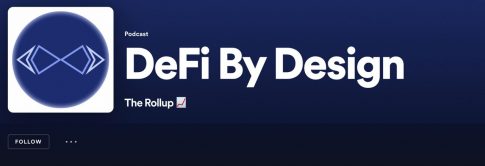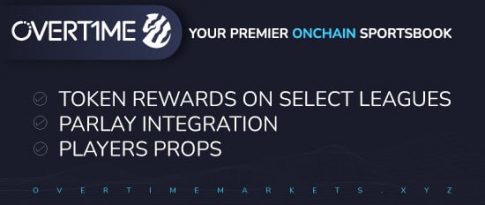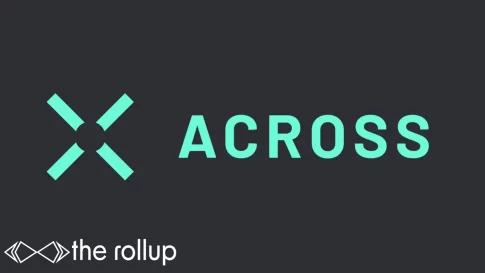
How Modular Rollups and RaaS are Ushering in a New Era of Cost-Effective, App-Specific Chains
NFL Season is available to trade on Overtime – Sports market AMM built on Thales Market, a Synthetix ecosystem project. Earn your share of 90k $OP, 90k ARB, and 180k $THALES in incentives. Try it 👉🏽 HERE!
AcrossProtocol is a cross-chain bridge for L2s and rollups secured by UMA’s optimistic oracle that prides itself on its speed, security and low fees. Check it 👉🏽 HERE.
High Rollers:
The blockchain space is on the brink of a revolution, with modular rollup ‘stacks’ simplifying the launch of new chains as easily as creating an ERC20 token.
This innovation heralds a new era of cost-effective, customizable blockchain solutions, thanks to the emergence of Rollup-as-a-Service (RaaS) models.
In this post, we’ll explore why developers are eager to build their own chains and how modular rollups are making this a reality, transforming the blockchain landscape with enhanced user experiences and unprecedented scalability.
Cheers,
The Rollup
𝗧𝗵𝗲 𝗲𝗿𝗮 𝗼𝗳 𝗲𝘅𝗽𝗲𝗻𝘀𝗶𝘃𝗲 𝗯𝗹𝗼𝗰𝗸𝘀𝗽𝗮𝗰𝗲 𝗶𝘀 𝗰𝗼𝗺𝗶𝗻𝗴 𝘁𝗼 𝗮𝗻 𝗮𝗯𝗿𝘂𝗽𝘁 𝗵𝗮𝗹𝘁.
Modular rollup ‘stacks’ are making it as easy to launch a new chain as an ERC20 token.
With the emergence of rollup-as-service (RaaS) companies in crypto, we are headed toward a world of modular rollups with extremely low or even zero transaction fees, high throughput, and great UX.
In today’s post, you’ll learn why I believe modular rollups are the only way Ethereum & EVM can compete with the new shiny high TPS blockchains, the RaaS business model, and a particular OG team pushing hard to make this vision a reality.
To start this off, we’ll answer: Why do devs want to build their own chains?
Up until recently in EVM land, the idea of app-specific rollups has been somewhat unattainable.
The costs of setting up your own infra to deploy a chain for one specific dApp in a siloed execution environment haven’t been economically viable nor wise from a liquidity and network effects POV.
That’s now changed.
You see, most dApps compete for blockspace. On Ethereum L1, there is limited blockspace with a lot of dApps. We’ve seen insane gas spikes and network congestion from NFT mints and other high-profile events.
Due to this, devs and builders have packed their bags like pioneers and moved to the next settlement: L2s.
Rollups have brought a massive boost in UX for Ethereum and the rollup-centric roadmap has been cemented in place as we are now seeing tons of L2s pop up. However, in a pre-EIP4844 world, we are starting to encounter some of the same issues as before.
So, how do we solve this?
Modular rollups.
Modular rollups enable flexibility, customization and usecase specific selection of independent parts which make up a whole, as seen below:

These independent parts allow for more scalability and better UX for users.
Furthermore, I believe the solution begins at the Data Availability (DA) layer and also permeates into the core Virtual Machine (VM) layer, enabling what I call “modular rollups” which are optimized for specific usecases.
By using something called Data Availability Sampling (DAS), altDA layers are able to quickly sample the data of a given block, confirm its validity and create a data pointer to the settlement layer (L1) for cheaper data publishing costs.
Think of it taking small strips of a given whole as seen below:

Appchains using altDA and other parts of the modular stack will have a better UX and lower costs than those without.
Point blank.
The part of how we get to this modular rollup-focused world is the part that is a bit fuzzy still…
𝗘𝗻𝘁𝗲𝗿: 𝗥𝗼𝗹𝗹𝘂𝗽-𝗮𝘀-𝗮-𝗦𝗲𝗿𝘃𝗶𝗰𝗲 (𝗥𝗮𝗮𝗦) 𝗽𝗿𝗼𝘃𝗶𝗱𝗲𝗿𝘀.
RaaS providers allow builders to deploy their flavor of rollup in “a few clicks” with a fully functional execution environment which would previously take months or years of building to get to.
These rollups inherit the security of Ethereum and can use altDA, and soon, altVMs as well.
For today’s post, we’ll place a focus on Gelato Network’s RaaS.
Gelato makes it incredibly easy to launch your custom Ethereum App-specific or ecosystem chains. With Gelato, you can deploy, run, and manage optimistic or zero-knowledge chains effortlessly.
It offers low transaction fees, high throughput, and a comprehensive web3 infrastructure package, including Oracles, Bridges, Indexers, Block Explorers, Account Abstraction, and more.
You can choose from these features à la carte to create to be integrated natively for a fully production-ready developer environment tailored for your specific use-case from the Genesis Block.
Gelato offers no-code deployments of fully-serviced Ethereum rollups on all leading EVM execution frameworks like Arbitrum Orbit, Optimism OP stack, Polygon CDK and zkStack and is currently integrated with Celestia for altDA with Avail Project & Eigen DA coming soon.

What makes me bullish on Gelato Network RaaS in particular is besides their standard out-of-box solutions, they are also offering tailored L2 chains with advanced functionality like alternative DAs for zero-gas rollups and L2s with native yield via staking, pioneering new crypto use cases with first-of-its-kind chains being built today and launching in production in coming weeks.
A Web3 user experience (UX) with zero gas fees has scaling possibilities similar to current traditional webapps.
Utilizing altDA, combined with Gelato RaaS opens up potential for a gas-free UX for metaverse gaming, NFT collectibles, and creator-first content platforms allowing them to scale to tens of millions of users.
Besides the optimized modular blockchain environment, Gelato RaaS also offers customized Web3 Services infrastructure for gaming and retail applications like native account abstraction, verified randomness, NFT marketplaces, on and off-ramp providers, and more to make the launch process as seamless as possible.
Also on Gelato, you can build complete ecosystems that share revenue with its users, up to 100% of sequencing fees, along with native yield accrued through staking of bridged assets, and protocol revenue sharing.
Recently, they announced a collaboration with LayerZero Labs to facilitate unified interop amongst all of L2s which launch using the Gelato RaaS.
See below how the L0 endpoint is embedded in the stack:

These are just a few of the novel use cases Gelato is pioneering.
However, the strength of the Gelato RaaS shines through the projects they are building; Ecosystem chains.
Recently, Gelato helped Astar Network launch their zkEVM on Polygon CDK as well as Lisk launch their general purpose L2 on the OP stack.
While Gelato makes no-code chain deployments appear easy, the truth is that building blockchains is a complex process. Moreover, constructing ecosystem chains necessitates a comprehensive set of underlying infrastructure and dependencies.
Ecosystem chains are not a bistro-type of restaurants with only six courses.
Those chains are built to attract a variety of developers building DeFi, gaming, and dApps requiring the a comprehensive set of infrastructure.
During a recent call with Gelato Founder Hilmar, there was some alpha dropped about upcoming chains…of course, the ApeCoin chain is public and team is working on getting that done.
𝗕𝘂𝗹𝗹𝗶𝘀𝗵.
To wrap this up:
The thesis remains strong: Modular rollups are here to stay and will dominate UX and growth in 2024 and beyond. We will see the further emergence of altDA layers and altVMs provide a smoother and safer experience than EVM.
Through my close work with Gelato, my thesis has been shaped that these projects are positioned in a prime spot to take advantage of this trend, and while many may feel it’s a ‘race to the bottom’ across many parts of the modular stack (fees, revenue, etc.,) the reality I foresee is one a tad more optimistic:
The users garner the largest benefit from the modular future and this is what really matters at the end of the day.
“𝘉𝘶𝘪𝘭𝘥 𝘸𝘩𝘢𝘵𝘦𝘷𝘦𝘳” 𝘪𝘴 𝘳𝘦𝘢𝘭, 𝘢𝘯𝘰𝘯.
🙌 Together with:
Connext – Build Web3 applications that can securely interact with users, tokens, and other applications on any chain – just like on the web. Learn more here.
Jumper Exchange A truly multi-chain exchange. Aggregating the best in the business for bridging, swapping, and onramping. Learn more here.
Cartesi is an application-specific rollup protocol with a Linux runtime. Scaling Computation. Transcending EVM Limitations. Learn more here.
Disclaimer: Please be aware that investing in cryptocurrency and DeFi platforms involves risks like technical glitches and human errors. We may receive commissions for featuring certain projects, which will be clearly noted. Our content is educational only and not financial advice; we are not licensed advisors.







